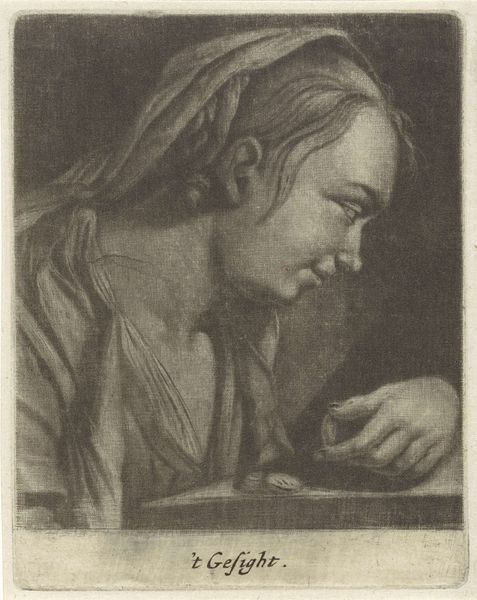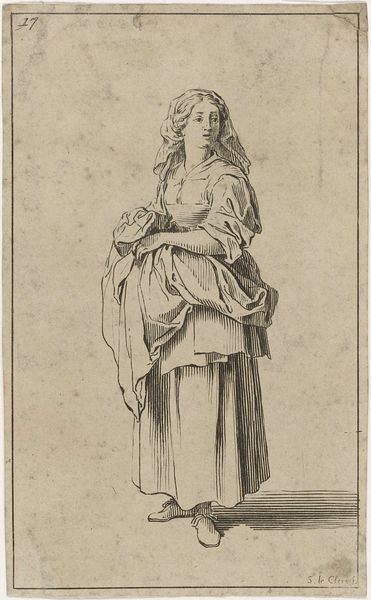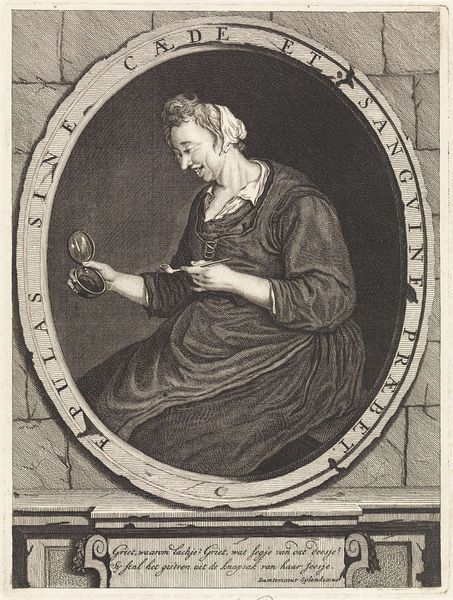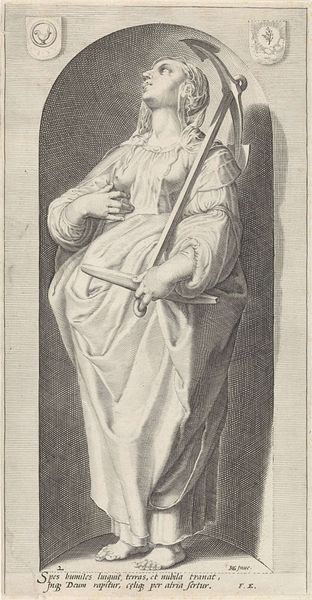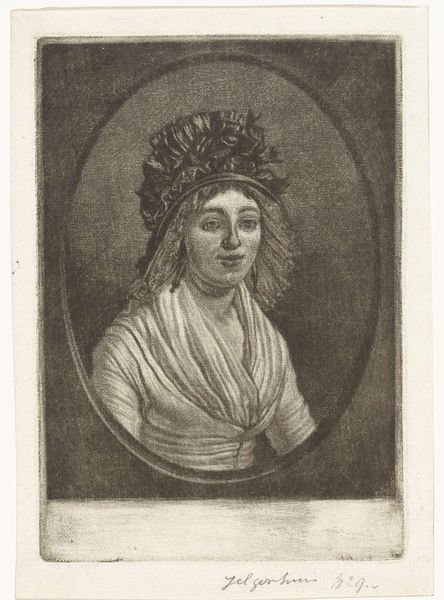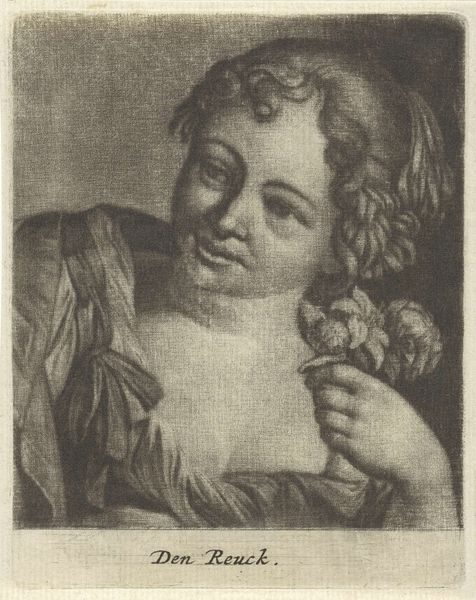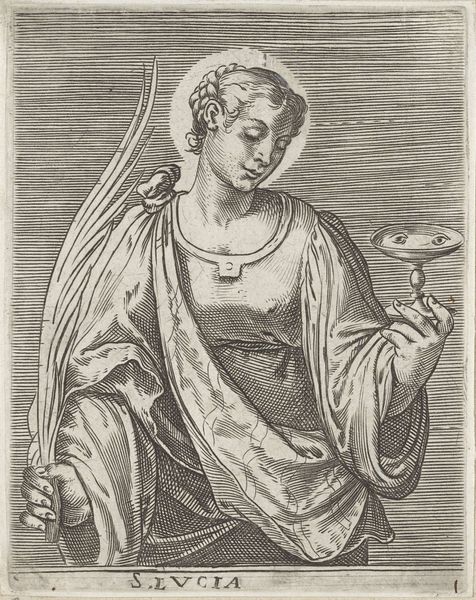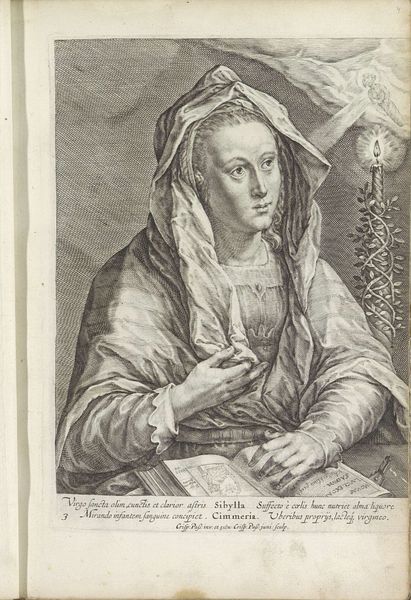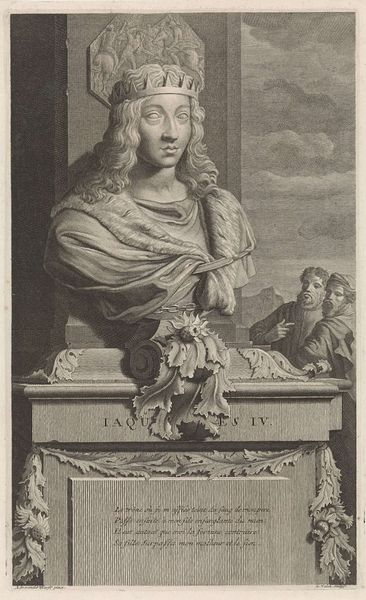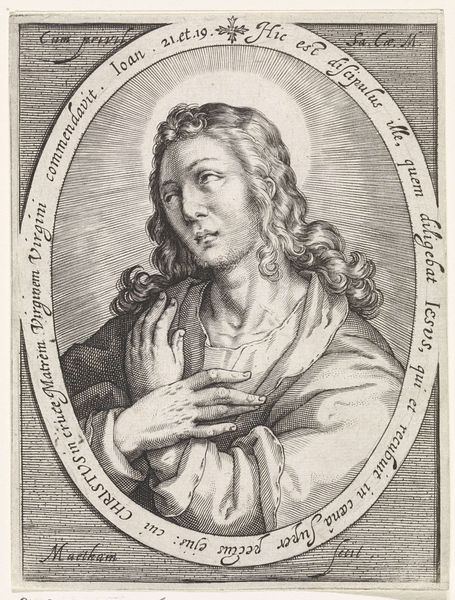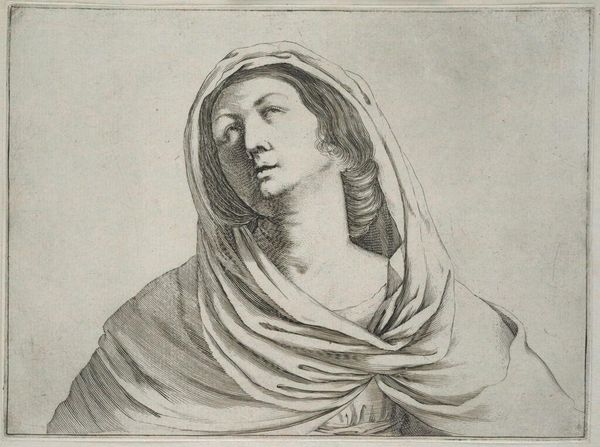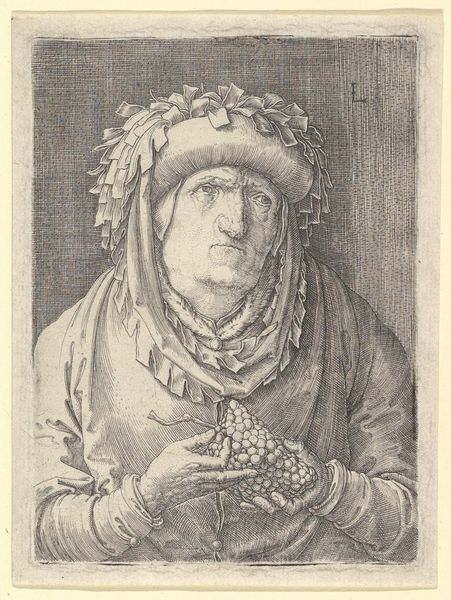
engraving
#
portrait
#
baroque
#
dutch-golden-age
#
genre-painting
#
engraving
#
realism
Dimensions: height 260 mm, width 192 mm
Copyright: Rijks Museum: Open Domain
Editor: This engraving, called "Het Gevoel," dating from around 1683-1684, is currently housed in the Rijksmuseum. The Dutch title translates to “The Feeling.” I’m struck by the downcast gaze of the woman; she appears lost in thought. What do you see in this piece? Curator: The entire composition serves as a symbol. Consider the placement of her hands. They’re centrally located and intertwined, drawing our attention inward. This act of fiddling or fidgeting represents, psychologically, a self-soothing mechanism, an outward sign of inner turmoil, but more deeply and more generally a tangible visualization of inward sentiment. Editor: Turmoil? Is there any significance to the hood? Curator: Absolutely! In many periods and cultures, hoods and veils signify modesty, mourning, or seclusion. In this context, consider its connection to Dutch genre painting of the Golden Age. What did domesticity represent? Editor: Usually idealized family life or a moral message… Curator: Precisely. And how does *this* domestic scene stray from those ideals? Perhaps this print captures something less ideal: the unspoken, private anxieties within domesticity. Editor: I see what you mean! It’s a powerful message conveyed through simple symbolism and composition. The artist successfully used imagery to translate sentiment through universal human gestures. Curator: Exactly, and it makes the emotional narrative timeless and very poignant. It bridges the gap between then and now.
Comments
No comments
Be the first to comment and join the conversation on the ultimate creative platform.
